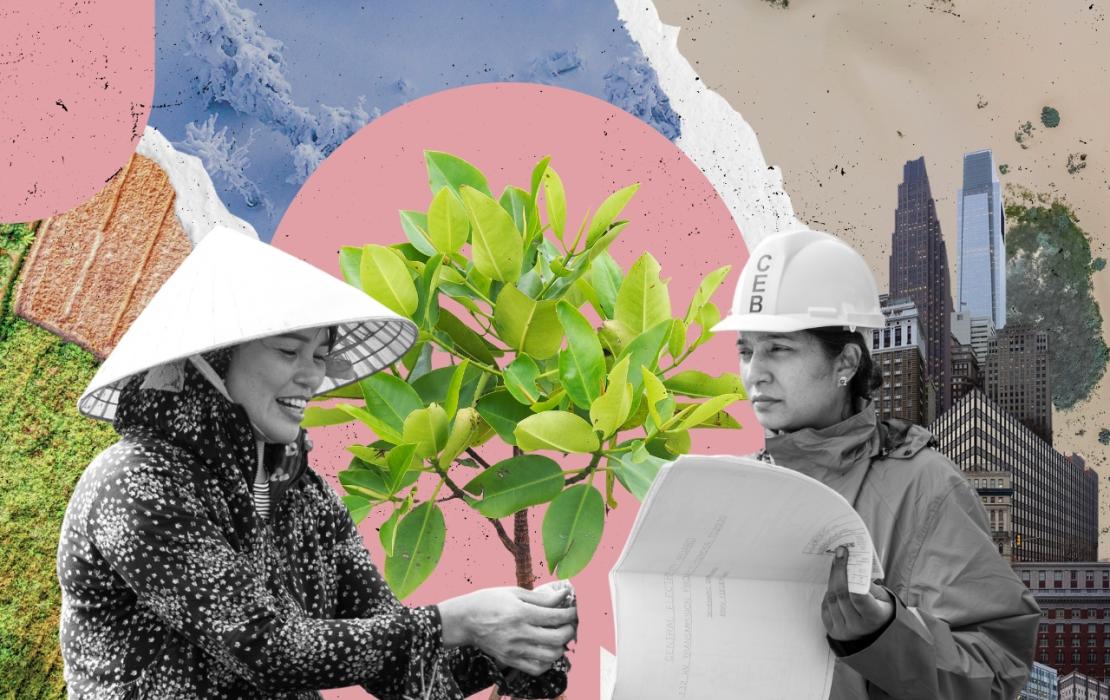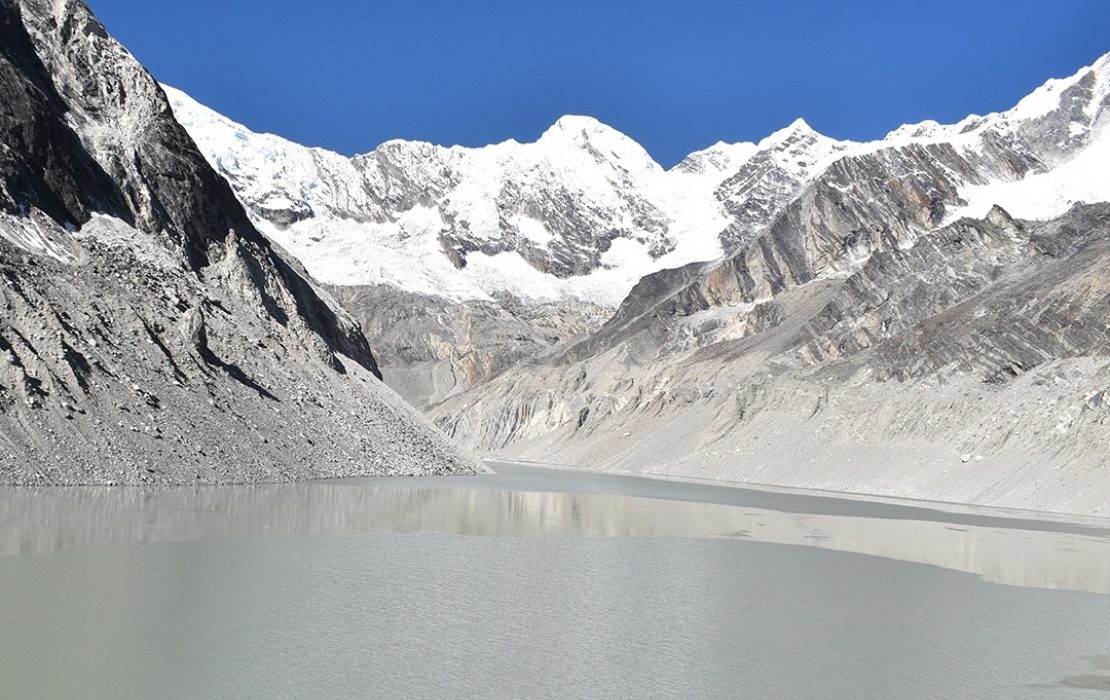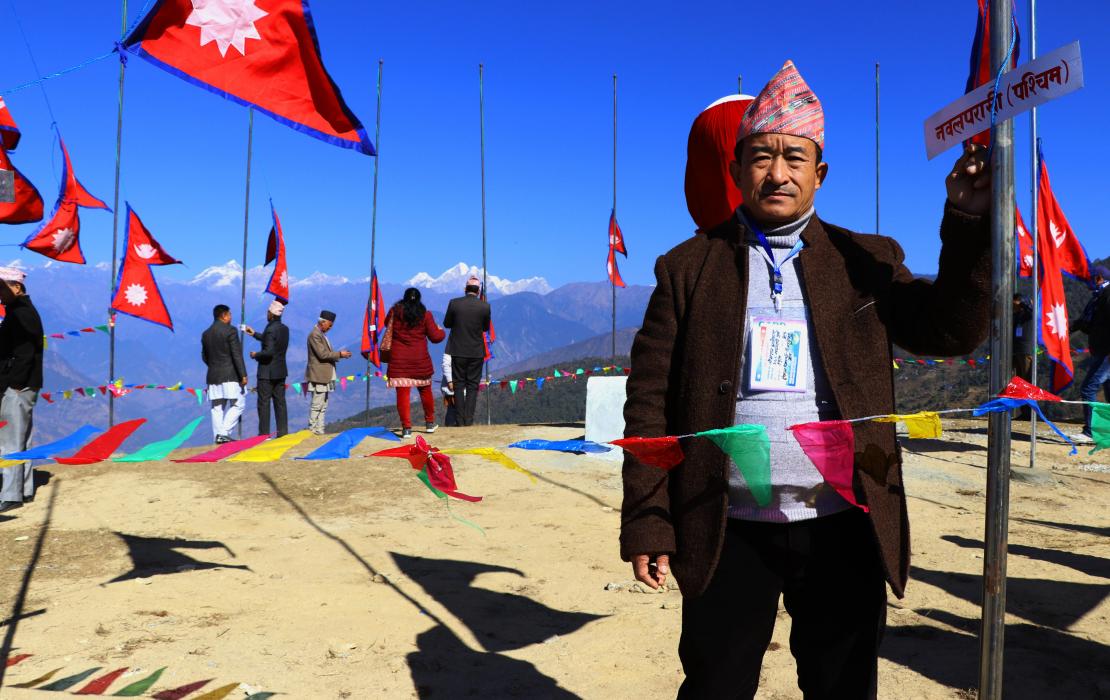
Photo: Rabik Upadhyay/UNDP Nepal
Across the Hindu Kush Himalaya – an 800-kilometre-long mountain range often called the “Third Pole” – the number and size of glacial lakes are rapidly increasing. Communities are witnessing the sweeping impacts of climate change before their eyes; temperatures rising, glaciers shrinking, new lakes forming and unexpected vegetation appearing at high altitudes.
For mountain dwellers in eight countries along this range, these shifts are not abstract science – they are lived realities, leaving families fearful, displaced and unsettled.
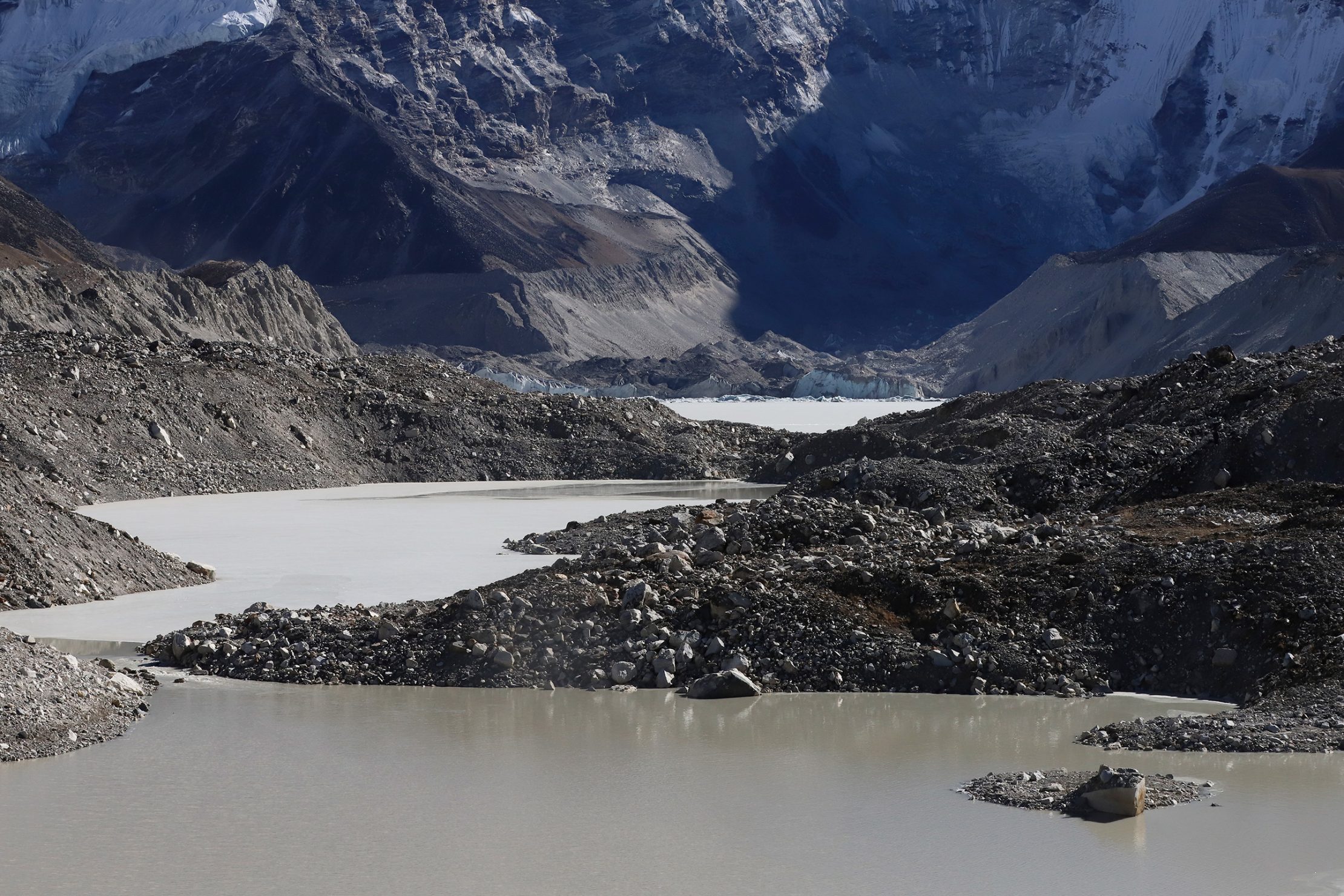
Across the Hindu Kush Himalaya, the number and size of glacial lakes are rapidly increasing. Photo: Kamal Raj Sigdel/UNDP Nepal
Safeguarding mountain communities from the threat of glacial lake outburst floods
One of the starkest examples is Imja Lake in Nepal’s Everest region. Until the 1960s, it was only a relatively small pool of meltwater high in the mountains. But as the glaciers around it began to retreat, its size swelled dramatically, reaching a surface area of 1.28 square kilometres, a depth of nearly 150 metres and a volume of over 75 million cubic metres of water by 2014. Located above mountain villages, this shimmering reservoir had become a looming threat to the communities downstream.
To reduce the risk of a catastrophic outburst flood and subsequent flooding in the country’s southern plains, Nepal secured US$7 million from the Global Environment Facility (GEF)’s Least Developed Country Fund. With these resources and the technical support of UNDP, the Department of Hydrology and Meteorology (DHM) mobilized the Nepal Army and high-altitude workers to carve an artificial drainage channel, successfully lowering the lake’s water level by 3.4 metres.
To protect downstream communities, half a dozen automated sirens were also installed – only the second time in Nepal’s history that such a glacial risk mitigation system was put in place, after earlier efforts at Tsho Rolpa glacial lake back in 2000. The work was anything but easy. Given the extreme terrain, construction materials were airlifted by helicopter, and the team completed the assignment while enduring the freezing cold.
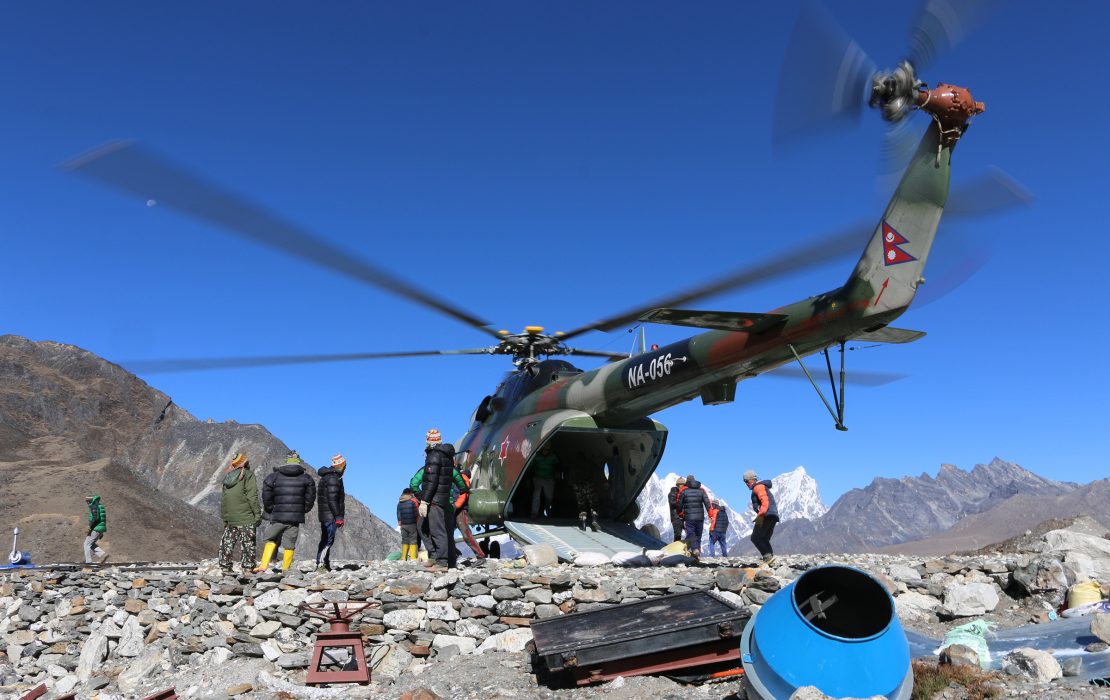
A Nepal Army helicopter delivers materials during operations to lower Imja Lake. Photo: UNDP Nepal

A technician installs an early warning radar along the edge of Imja Lake to monitor potential outburst floods. Photo: Kamal Raj Sigdel/UNDP Nepal
“It was a challenging job. Yet we made it a success – even when resourceful countries like India and Bhutan had not been able to avert the risk of glacial lakes hanging on steep slopes,” said Kamal Ram Joshi, Director General of the DHM. “This has provided a clear way forward in mitigating risks in other vulnerable glacial lakes.”
Nepal’s success in reducing the threat posed by Imja Lake set an important precedent, paving the way to address other high-risk glacial lakes. In 2025, the Green Climate Fund (GCF) approved a $36.1 million grant to reduce the growing threat of glacial lake outburst floods in the country. This new initiative, led by the DHM in partnership with UNDP, is focused on four potentially dangerous glacial lakes – Thulagi, Hongu 2, Lower Barun and Lumding Tsho.
Yet the challenge the country is facing is far larger. Of the 47 glacial lakes in the Hindu Kush Himalaya region considered at imminent risk of bursting, 21 are in Nepal, threatening downstream communities with devastating floods.
The success at Imja Lake, however, boosted the confidence of Nepalese authorities in tackling this issue. According to Joshi, this progress paved the way for Nepal to prepare a comprehensive risk mitigation plan. “Building on this plan and the evidence generated so far, we can now approach other development partners to further minimize risks," said Joshi. "This is essential if we are to achieve our goal of ensuring early warning systems for all by 2030."

While small in size, Nepal ranks fourth globally in terms of overall vulnerability to climate change. Photo: Prakash Timilsina/UNDP Nepal
Building climate-resilient livelihoods in Nepal’s hills and plains
Glacial lake outburst floods in the Himalayas are not the only climate-related threat Nepal faces. While small in size, Nepal ranks fourth globally in terms of overall vulnerability to climate change. In the hills and southern parts of the country, droughts are massively impacting low-income households. And on the southern plains bordering India, increasingly erratic rainfall patterns trigger landslides and flash floods.
The success of the glacial lake lowering project created momentum to use the same funding source to strengthen the resilience of drought-affected communities in watersheds of the Sunkoshi River basin in Eastern Nepal.
To help communities cope, UNDP worked with the government to introduce a new way of managing water. The approach was simple but powerful: protect and restore local water sources so that people in Khotang and Okhaldhunga could rebuild their livelihoods. In these districts, water scarcity had pushed people to the brink, affecting not only farming but daily life itself.

Simple but effective nature-based solutions have eased the water crisis. Photo: Robic Upadhyay/UNDP Nepal

As water returned, so has farming. Photo: Robic Upadhyay/UNDP Nepal
With the project's support, communities began using simple but effective nature-based solutions, protecting water sources, building recharge ponds, harvesting rainwater and lifting water with solar pumps.
The impact is visible. Barren lands have been transformed back into thriving farmland. Water sources are more secure and rainwater harvesting has eased the pressure on daily use. Newly built irrigation ponds now enable farmers to grow vegetables, providing an additional source of income.
As water returned, so did farming, with some farmers cultivating high-value cash crops, including kiwis, avocados, tea, coffee, oranges, mangoes, bananas and lemons. Some farmers successfully resumed paddy farming after more than a decade and a half.
“This year, I planted paddy on six out of my 29 ropanis of land. Planting paddy at an altitude of 2,000 metres is unbelievable,” said Basnet, a 41-year-old farmer in Chisankhugadhi, Okhaldhunga. “It is the first time that I saw paddy farming here.”

Basnet's family can now grow enough grains for themselves and their livestock. Photo: Robic Upadhyay/UNDP Nepal
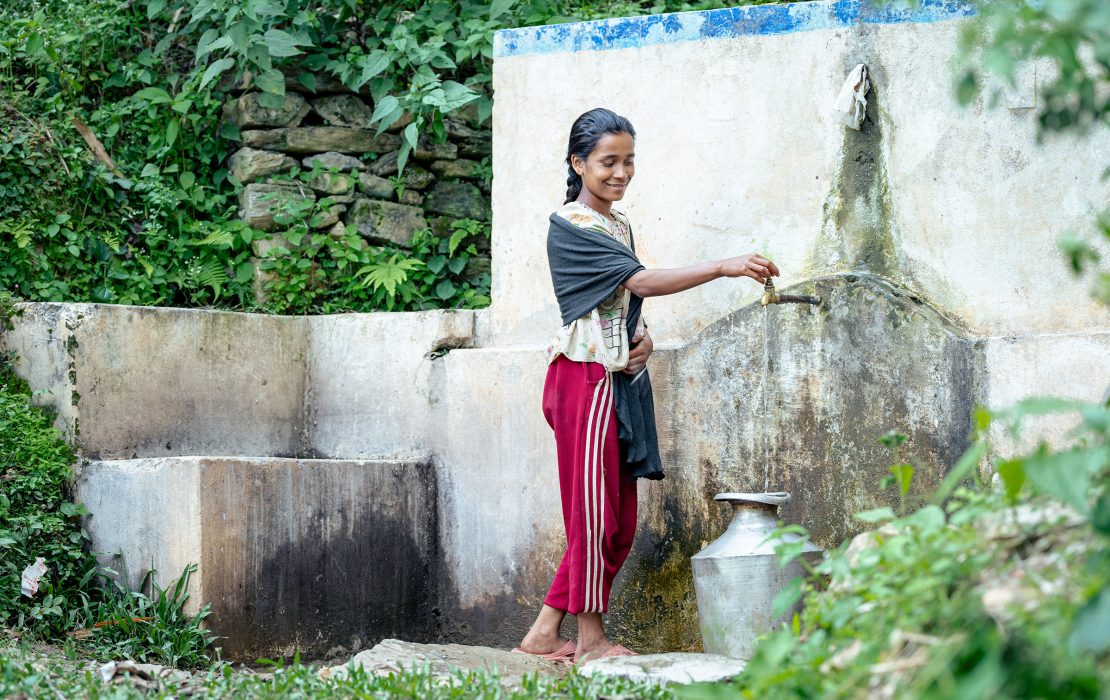
Water sources are more secure and rainwater harvesting has eased the pressure on daily use. Photo: Robic Upadhyay/UNDP Nepal

With water restored, farmers are cultivating high-value cash crops. Photo: Robic Upadhyay/UNDP Nepal
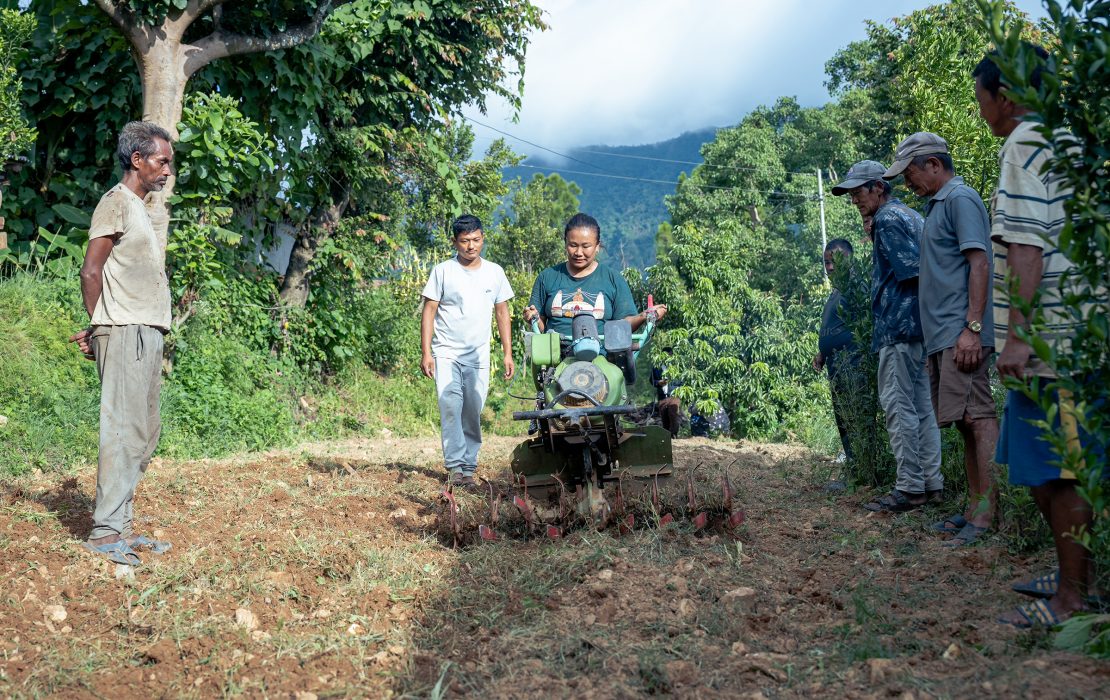
Farmers are applying alternative farming techniques and efficient water use strategies learned through the project. Photo: Robic Upadhyay/UNDP Nepal
Within just a few years, these measures have already directly benefited more than 121,000 people. More than 600 water sources are now protected in Khotang and Okhaldhunga districts. Additionally, locals have constructed 100 catchment ponds, 40 contour trenches and 25 water holes. The practice of rainwater harvesting has helped to irrigate 600 hectares of land.
Sustainable water management has also brought wider change. Conservation farming is now being practiced on 2,500 hectares of land, more than a third of the area under cultivation. Four solar-powered water lifting systems have been installed to support marginalized Majhi communities. And, in a first for Nepal, drones were used to “seed bomb” four degraded areas, helping restore lost forests.
With these visible changes, the flow of out-migration has stagnated in Khotang, a district with the second-highest out-migration rate. A similar impact can be observed in the neighbouring district of Okhaldhunga.
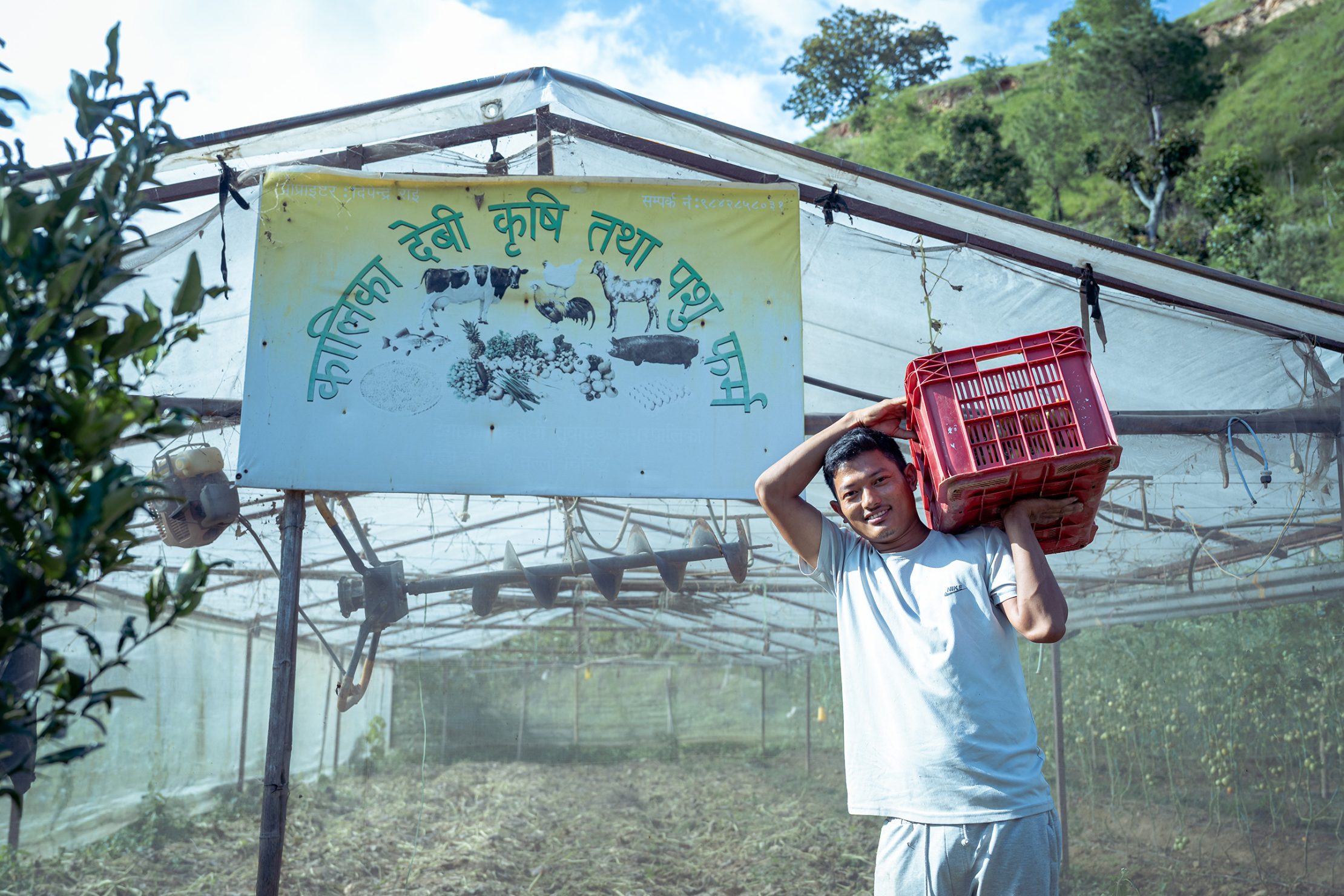
With restored water access, farmers in Khotang and Okhaldhunga are expanding production and strengthening their livelihoods. Photo: Robic Upadhyay/UNDP Nepal
The success of these initiatives has catalyzed broader action at the local level. Inspired by the demonstrated impact of nature-based solutions in the project areas, the municipalities in both districts have now integrated similar activities into their annual plans and allocated budget to sustain and scale up the results.
Furthermore, the Koshi Province Government is not only replicating these approaches, but also channeling provincial funds earmarked for the promotion of water conservation, watershed restoration, and climate-resilient livelihoods.
This growing institutional ownership by local and provincial governments marks a significant shift toward sustainable, locally driven climate action, ensuring that the benefits extend well beyond the project’s lifespan. One key achievement was the formulation of climate-resilient watershed management directives, now being put into practice by local governments.
Badri Raj Dhungana, Director General of the Department of Forest and Soil Conservation, says the project has marked some important milestones in helping vulnerable communities revive their livelihoods by restoring water in drought-affected areas.
“The project has supported us in implementing several plans, policies, guidelines and standards to institutionalize integrated watershed management across federal, provincial and local levels,” said Dhungana. "By combining innovative technologies with increased community participation, the initiative has proven to be an effective tool for reducing drought-related livelihood risks.”
For Basnet, the changes have been profound as well. He now believes that nature-based solutions are the only way to combat drought.
“With the protection and proper use of our water sources, greenery has returned,” he said. “I have realized that nature has its own way of restoring balance.”
*
Led by Nepal’s Department of Forests and Soil Conservation, with support from UNDP and funding from the GEF-managed Least Developed Countries Fund, the project Developing Climate Resilient Livelihoods in the Vulnerable Watershed in Nepal (2020–2025) has benefited approximately 120,000 people through nature-based solutions that strengthen water security and climate change resilience.
